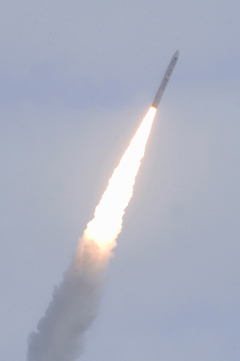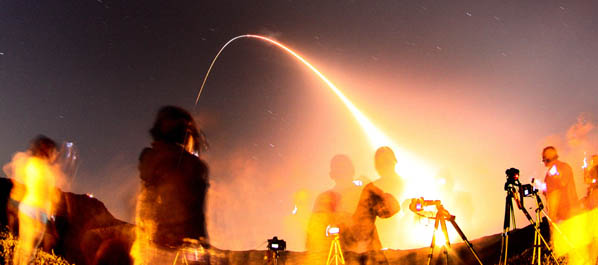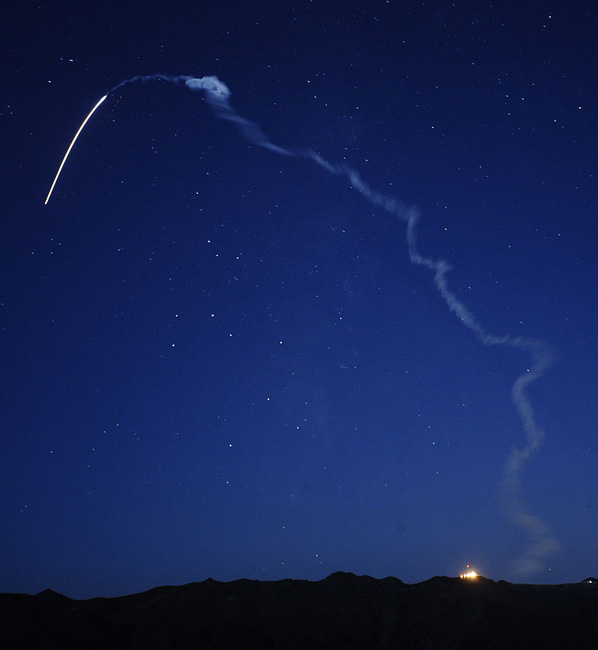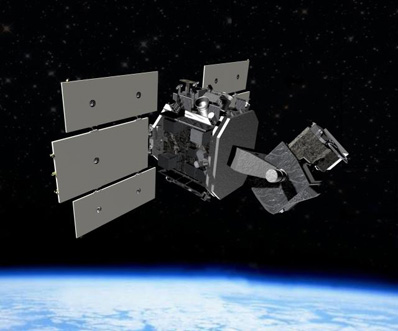Z
Zipi
Guest
Launch window: 04:41-04:55 GMT (12:41-12:55 am EDT)
Launch site: SLC-8, Vandenberg Air Force Base, California
The Air Force Minotaur 4 rocket will launch the first satellite of the Space-Based Surveillance System. SBSS will join a network of ground sensors that track satellites in orbit around Earth. The launch will be the second flight of the Minotaur 4 rocket, which is partially comprised of retired Peacekeeper motors. Delayed from Oct. 23, Oct. 30 and April
SBSS Wikipedia Article: http://en.wikipedia.org/wiki/Space_Base ... rveillance
Boeing SBSS Page: http://www.boeing.com/defense-space/spa ... /sbss.html
Boeing SBSS Product Card: http://www.boeing.com/defense-space/spa ... t_Card.pdf
GlobalSecurity.org SBSS Article: http://www.globalsecurity.org/space/systems/sbss.htm

Minotaur IV Launch Vehicle
Minotaur IV (also known as Peacekeeper SLV and OSP-2 PK) is derived from Peacekeeper missile.
Minotaur IV Wikipedia Article: http://en.wikipedia.org/wiki/Minotaur_IV
Minotaur Rocket Family Wikipedia Article: http://en.wikipedia.org/wiki/Minotaur_(rocket_family)
Orbital Sciences Minotaur IV Fact Sheet: http://www.orbital.com/NewsInfo/Publica ... V_Fact.pdf
Orbital Sciences Mitonaur IV Page: http://www.orbital.com/SpaceLaunch/Minotaur/IV/
Orbital Sciences Minotaur Page: http://www.orbital.com/SpaceLaunch/Minotaur/



Rocket Stages
All Minotaur IV rocked stages are powered by solid rocket motors.
First Stage: SR-118, 2200kN thrust
Second Stage: SR-119, 1365kN thrust, 54 seconds
Third Stage: SR-120, 329kN thrust, 62 seconds
Fourth Stage: Orion-38, 32,2kN thrust, 67,7 seconds (or optional Star-48V with 68,6kN thrust, 84,1 seconds)
Vandenberg Air Force Base
Vandenberg AFB Wikipedia Article: http://en.wikipedia.org/wiki/Vandenberg_Air_Force_Base
SLC-8 Wikipedia Article: http://en.wikipedia.org/wiki/Vandenberg ... _Complex_8
Spaceport Systems International SLC-8 Page: http://www.calspace.com/SSI/SLC-8_Overview.html
SSI MAT Features: http://www.calspace.com/SSI/SLC-8_Mod_Summary.html
SSI SLC-8 Map & Features: http://www.calspace.com/SSI/CLF_%28SLC- ... South.html
Astronautix SLC-8 Page: http://www.astronautix.com/sites/vangslc8.htm
Vandenberg AFB Google Maps Link: http://maps.google.com/maps?ll=34.72972 ... 120.576944
SLC-8 Google Maps Link: http://maps.google.com/maps?f=q&source= ... 4&t=h&z=17



Launch site: SLC-8, Vandenberg Air Force Base, California
The Air Force Minotaur 4 rocket will launch the first satellite of the Space-Based Surveillance System. SBSS will join a network of ground sensors that track satellites in orbit around Earth. The launch will be the second flight of the Minotaur 4 rocket, which is partially comprised of retired Peacekeeper motors. Delayed from Oct. 23, Oct. 30 and April
SBSS Wikipedia Article: http://en.wikipedia.org/wiki/Space_Base ... rveillance
Boeing SBSS Page: http://www.boeing.com/defense-space/spa ... /sbss.html
Boeing SBSS Product Card: http://www.boeing.com/defense-space/spa ... t_Card.pdf
GlobalSecurity.org SBSS Article: http://www.globalsecurity.org/space/systems/sbss.htm

Minotaur IV Launch Vehicle
Minotaur IV (also known as Peacekeeper SLV and OSP-2 PK) is derived from Peacekeeper missile.
Minotaur IV Wikipedia Article: http://en.wikipedia.org/wiki/Minotaur_IV
Minotaur Rocket Family Wikipedia Article: http://en.wikipedia.org/wiki/Minotaur_(rocket_family)
Orbital Sciences Minotaur IV Fact Sheet: http://www.orbital.com/NewsInfo/Publica ... V_Fact.pdf
Orbital Sciences Mitonaur IV Page: http://www.orbital.com/SpaceLaunch/Minotaur/IV/
Orbital Sciences Minotaur Page: http://www.orbital.com/SpaceLaunch/Minotaur/



Rocket Stages
All Minotaur IV rocked stages are powered by solid rocket motors.
First Stage: SR-118, 2200kN thrust
Second Stage: SR-119, 1365kN thrust, 54 seconds
Third Stage: SR-120, 329kN thrust, 62 seconds
Fourth Stage: Orion-38, 32,2kN thrust, 67,7 seconds (or optional Star-48V with 68,6kN thrust, 84,1 seconds)
Vandenberg Air Force Base
Vandenberg AFB Wikipedia Article: http://en.wikipedia.org/wiki/Vandenberg_Air_Force_Base
SLC-8 Wikipedia Article: http://en.wikipedia.org/wiki/Vandenberg ... _Complex_8
Spaceport Systems International SLC-8 Page: http://www.calspace.com/SSI/SLC-8_Overview.html
SSI MAT Features: http://www.calspace.com/SSI/SLC-8_Mod_Summary.html
SSI SLC-8 Map & Features: http://www.calspace.com/SSI/CLF_%28SLC- ... South.html
Astronautix SLC-8 Page: http://www.astronautix.com/sites/vangslc8.htm
Vandenberg AFB Google Maps Link: http://maps.google.com/maps?ll=34.72972 ... 120.576944
SLC-8 Google Maps Link: http://maps.google.com/maps?f=q&source= ... 4&t=h&z=17













